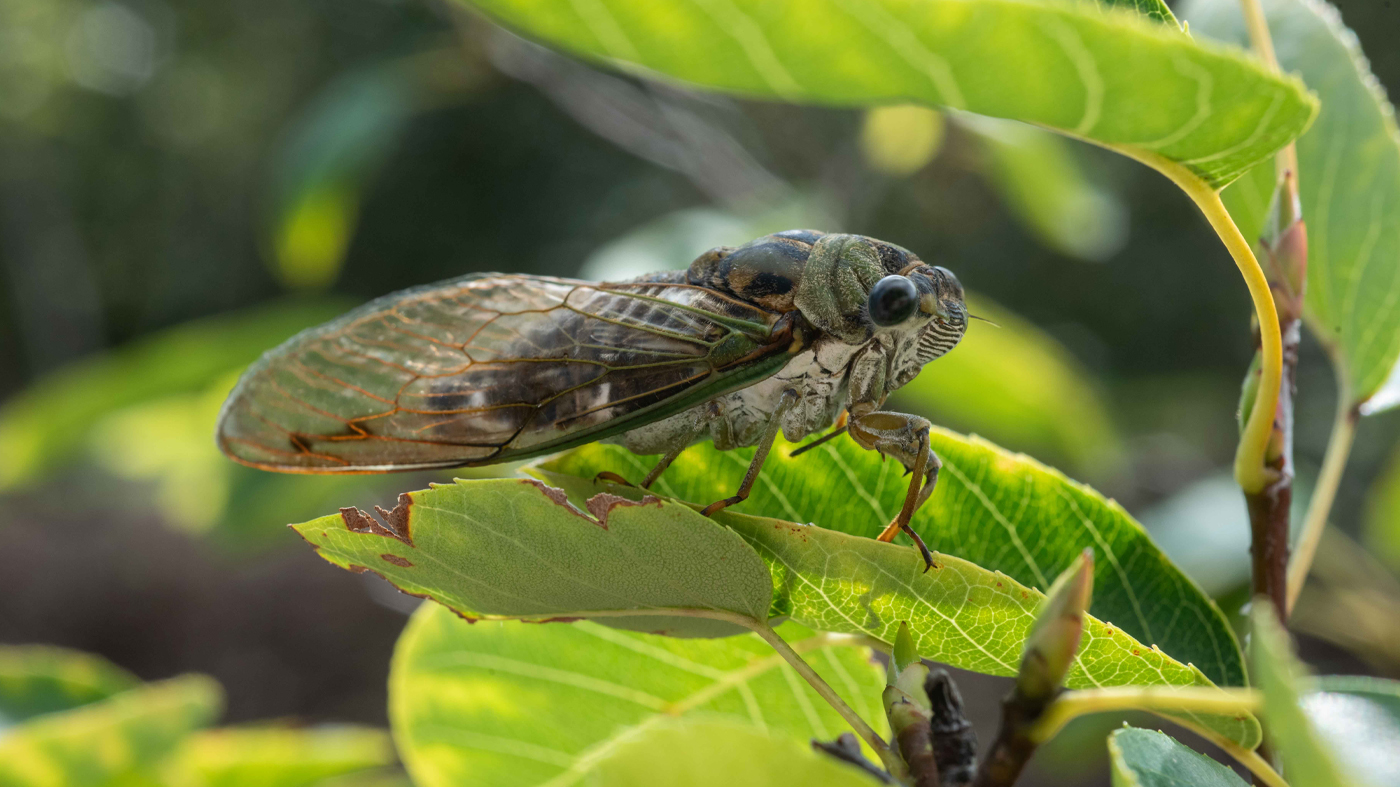
Annual cicada
The 17-year cicadas are gone, but if you or someone in your family is a bug lover like me, insect fascination is never ending. Here are five activities you can do this summer to extend the enchantment.
1. Annual cicadas are emerging now.
There was a brief overlap with the periodic cicadas, but the annual species will be with us through summer. Be an insect investigator. Find an annual cicada and notice how the two different species are alike and different.

Dragonfly nymph exoskeleton
2. Did you know that all other insects go through life cycle stages like the cicada, with a dramatic final shedding to become adult flying insects?
Dragonfly nymphs live underwater until it’s their time to molt and live above ground and water.
The next time you are near a pond where you see dragonflies, look closely at the shoreline plants. If you are lucky, you will find their shed exoskeletons clinging to the base of the plant stems. A good place to find them is at the Kleinman Family Cove. Please be careful not to fall into the water while you are looking for them.

Fireflies or lightning bugs
3. Do you say “fireflies” or “lightning bugs.”
Both are correct and you can play a game with them no matter what you call them.
Fireflies flash a light for the same reason cicadas buzz—to find a mate. Female fireflies stay on the ground while males fly around about 3 feet off the ground, searching for a female signal. When a female likes a mate, she will flash at him in a particular pattern, which varies with species. Go outside during a firefly evening and try to figure out the flashing pattern. Repeat the pattern with a small flashlight and see if you can trick a male to landing on your flashlight.

Cicada Parade-A decorated plaster cicadas
4. Visit an insect exhibition.
The Chicago Botanic Garden’s Butterflies & Blooms is open through Labor Day and free with admission. Immerse yourself in a habitat filled with colorful live butterflies from around the world. Nearby in the Grunsfeld Children’s Growing Garden, you will find the Cicada Parade-A decorated plaster cicadas that celebrate our fascination with all things cicada. If you really cannot get enough entomology (the study of insects) I highly recommend visiting the Insect Asylum in Chicago, which sponsored the Cicada Parade-A in the Chicago area.

Swallowtail butterfly
5. As always, you can grow plants that attract insects you want to see.
Swallowtail butterflies will lay their eggs on parsley, dill, and related plants. Grow a nice bunch of these herbs together in your yard and see if you are blessed with a crop of caterpillars. Sure, they may eat most of the leaves, but you will enjoy watching them grow and change into beautiful butterflies.

